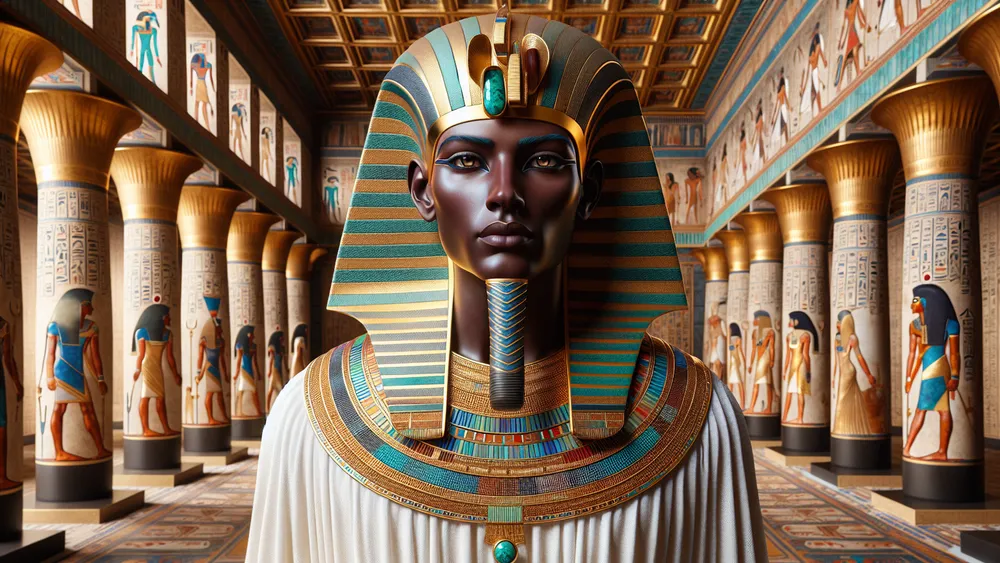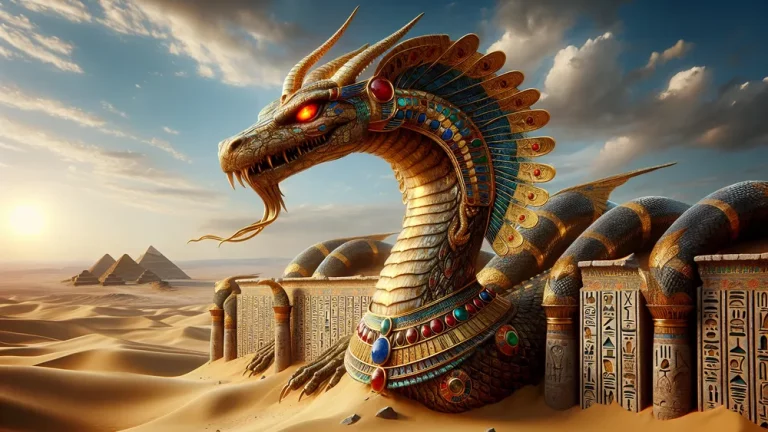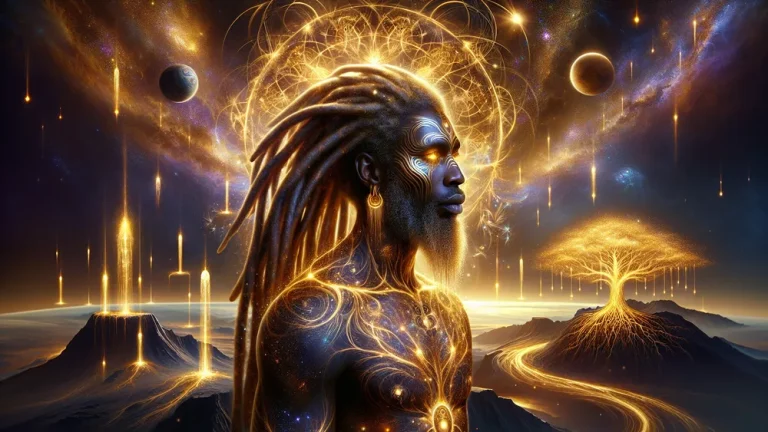Ancient Egyptian Ib: Soul And Heart Essence
Although you think of ancient Egyptian culture, and you imagine big pyramids, uncertain hieroglyphs, and strong pharaohs. Did you know Egyptians also knew a lot about the soul? One of the very interesting parts of their thoughts is the idea of the Ib, often called the “heart” or “essence” of a person. It was much more than only a part of the body.
Key Points:
- The Ib in ancient Egyptian culture was seen as the seat of emotion, thought, and intention, crucial for moral judgment and the afterlife.
- It played a central role in daily life, religious ceremonies, and mythological stories of gods and goddesses.
- The Weighng of the Heart ceremony was a vital ritual where the Ib was weighed against Ma’at’s feather to determine one’s fate after death.
- The Ib was part of a complex system of soul parts, working together for spiritual balance and eternal life.
- Ancient Egyptian art and writings often featured the Ib symbolically as the heart, emphasizing its importance in guiding moral and ethical behavior.
- New research has provided fresh perspectives on the Ib, shedding light on its significance in ancient Egyptian beliefs.
- The Ib has also made its way into modern pop culture, influencing movies, books, and art, keeping the fascination with ancient Egyptian culture alive.
The Ib was thought to be the place of emotion, thought, and what you want to do.
In this blog, we look at the many roles of the Ib in ancient Egyptian culture, from how it shows up in stories and what they did in religion to how it appears in art and writing. We also look into how the Ib worked with other parts of the soul and its importance in life after death, especially in the Weighing of the Heart ceremony.
By the end, you will understand why the Ib was very important to how the ancient Egyptians viewed living and dying.
Ib: Overview and Key Facts
| Important Point | Details |
|---|---|
| Meaning | The Ib is often called the “heart” or “essence” of a person in ancient Egyptian culture. Believed to be where emotions, thoughts, and actions come from. |
| Cultural Importance | The Ib was important in regular life and religion, affecting how people were seen and judged. |
| Role in Daily Life | People thought the Ib controlled a person’s actions, emotions, and choices, making it a crucial part of one’s character and behavior. |
| Religious Significance | In religion, the Ib was vital for rituals and ceremonies related to the afterlife and judgment. |
| Mythological Connections | The Ib connected with many gods and goddesses, playing a vital part in stories and religious writings. |
| Beliefs about Afterlife | The Ib was key in the Weighing of the Heart ceremony, where it was weighed against Ma’at’s feather to decide one’s fate after death. |
| Artistic Depictions | The Ib showed up often in ancient Egyptian art and writing, showing its importance in their culture. |
| Literary Mentions | Old writings, like the Book of the Dead, have many mentions of the Ib, showing its role in guiding moral and ethical behavior. |
| New Research | Recent studies and finds continue to explain the importance of the Ib, offering new views on ancient Egyptian beliefs. |
| In Pop Culture | The idea of the Ib has been shown in modern media, shaping current views of ancient Egyptian culture. |
Getting to Know the Ib in Ancient Egyptian Culture
To really understand the importance of the Ib, it is needed to go into its meaning and roles in ancient Egyptian culture. What the Ib meant and why it mattered so much, let’s find out.
What the Ib Really Means and Why It Mattered
In old Egyptian culture, the Ib was more than just a body part; it was seen as the very core of a person. The Ib, often called the “heart,” was believed to be where feelings, thoughts, and intentions come from. This idea is somewhat like how today, we might say someone has a “good heart” to describe their honesty.
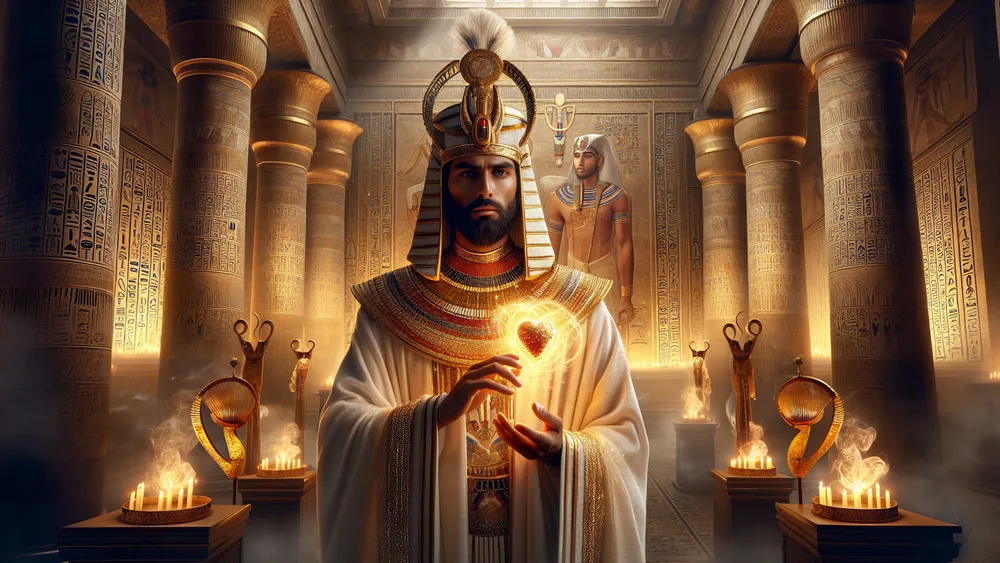
The Egyptians saw the Ib as the core part of one’s being, affecting not only one’s feelings and thoughts but also one’s actions and choices. This made the Ib a key part in understanding a person’s true self and moral honesty.
The Ib had several essential roles in everyday life and religious practices. It was seen as controlling a person’s actions and moral choices, making it a key part in how others viewed them. In religious events, the Ib was central to many rituals and ceremonies, especially those for the afterlife. For example, in the Weighing of the Heart ceremony, the Ib was weighed against the feather of Ma’at to decide one’s fate after death. Here are some roles the Ib had:
- Center of Feeling: The Ib was thought to be the center of all feelings, affecting how a person felt and reacted to different events.
- Thought and Choices: It was also seen as the source of thoughts and intentions, guiding a person’s actions and decisions.
- Moral Guide: The Ib was considered a reflection of one’s moral and ethical behavior, key in deciding one’s fate in the afterlife.
- Religious Ceremonies: The Ib was involved in various religious events, including offerings and prayers, to ensure a favorable outcome in the afterlife.
By knowing these roles, we can see why the Ib was central to the ancient Egyptians’ view of life and death.
The Ib, or heart, was viewed by ancient Egyptians as the core of a person, influencing feelings, thoughts, actions, and even determining one’s fate in the afterlife.
The Ib in Myths and Religious Settings
In Egyptian stories about gods, the Ib was often connected to various gods and goddesses, showing its deep importance in the spiritual world. For example, the god Thoth, known for his wisdom and role in judgment, was believed to write down the deeds written on the Ib during the Weighing of the Heart ceremony.
Also, the goddess Ma’at, who stood for truth and justice, was directly connected to the Ib because it was weighed against her feather to judge the purity of one’s soul. These connections show how the Ib was not just a personal thing but also a divine part connected with the order kept by the gods.
Moreover, religious events often involved the Ib, showing its importance in both life and after death. During burial rituals, priests would say spells and prayers to keep the Ib pure and truthful so it would pass the judgment in the afterlife. The “Opening of the Mouth” ceremony, an important rite to give back the dead person’s senses, also included calls to the Ib, showing its role in moving to the afterlife. Here are some main myth stories where the Ib is seen clearly:
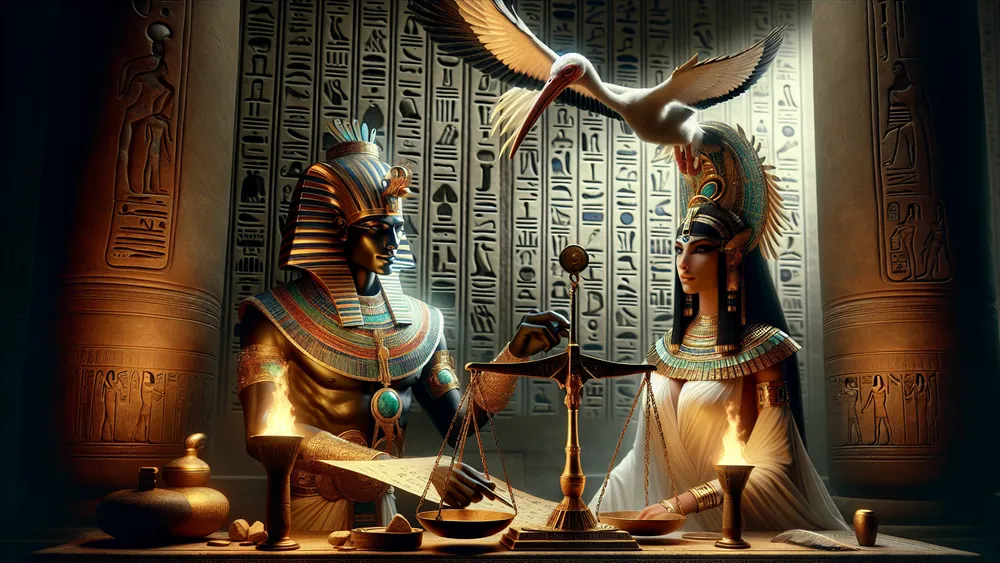
- The Weighing of the Heart: This ceremony in the Book of the Dead involved comparing the Ib with Ma’at’s feather to decide the fate of the dead person.
- Osiris and the Afterlife: In stories about Osiris, the god of the afterlife, the Ib was key in judging people and showing their moral and ethical lives.
- Thoth’s Writings: Thoth, the scribe of the gods, was believed to write down the deeds on the Ib, used later in judging the soul.
By knowing these myth connections and religious practices, we see how the Ib was deeply part of the spiritual and cultural life of ancient Egyptian society.
Weighing the Heart Ceremony
The Weighing of the Heart ceremony was a vital event in the ancient Egyptian afterlife. It decided if a soul would go to forever happiness or face destruction. This ceremony happened in the Duat, the Egyptian underworld, where the dead person’s Ib, or heart, was weighed against the feather of Ma’at, the goddess of truth and justice. Anubis, the jackal-headed god of mummification and the afterlife, watched over the weighing process.
Meanwhile, Thoth, the ibis-headed god of wisdom, wrote down the result. If the Ib balanced with the feather, it meant a life lived by Ma’at’s rules, allowing the soul to go to the Field of Reeds, an ideal place. But if the Ib was heavier, it meant a life full of sin, and the soul was eaten by Ammit, a scary creature part lion, hippo, and crocodile.
The Weighing of the Heart ceremony was detailed and symbolic. After death, the dead person would be guided through the underworld by different gods, facing tests and saying spells from the Book of the Dead to prove their worthiness. At the end of this journey, the Ib was put on one side of a scale, with Ma’at’s feather on the other. This act was like a modern court trial, where proofs are weighed to decide guilt or innocence. The gods Anubis and Thoth had key roles, ensuring the fairness and truth of the judgment. This ceremony highlighted the ancient Egyptians’ belief in moral honesty and the idea that one’s actions in life directly affected their fate after death. To see a bigger picture, here is a comparison of the Weighing of the Heart ceremony with other ancient judgment rituals:
| Aspect | Egyptian Weighing of the Heart | Mesopotamian Judgment | Greek Judgment (Hades) |
|---|---|---|---|
| God Involved | Anubis, Thoth, Ma’at | Ereshkigal, Nergal | Hades, Minos, Rhadamanthus |
| Judgment Symbol | Feather of Ma’at | Tablet of Destinies | Scales of Justice |
| Judgment Result | Forever happiness or destruction | Afterlife in the Underworld | Elysium, Tartarus, or Asphodel Meadows |
| Heart (Ib) Role | Central to the process | Not specifically mentioned | Not specifically mentioned |
Understanding the Weighing of the Heart ceremony gives insight into the ancient Egyptians’ strong focus on moral behavior. They believed that actions had forever results.
How the Ib Connects with Other Parts of the Soul
In ancient Egyptian belief, the Ib was one part of a complex system of soul parts, each playing an essential role in a person’s spiritual life. The Ib worked closely with the Ka, Ba, Ren, and Sheut, making a smooth balance needed for both life and the afterlife.
The Ka meant the vital force or life force, like the concept of a “spirit” that kept going after death. The Ba, often shown as a bird with a human head, symbolized the personality and movement of the soul, able to travel between the world of the living and the afterlife.
The Ren, or name, was important for one’s identity and being remembered, while the Sheut, or shadow, showed a person’s presence and protection. Together, these parts formed a whole, like different members of a team working together to reach a common goal.
This connection between these soul parts was key for reaching spiritual balance. The Egyptians thought that for a person to get eternal life, all parts of the soul had to be in balance and cared for properly. For example, the Ka needed offerings to keep it strong, the Ba needed freedom to move, and the Ren had to be kept safe through writings and monuments. The Ib, as the place of emotion, thought, and intention, played a big role in keeping this balance by guiding what is right and wrong. Here are the parts and jobs of each soul part:
- Ib (Heart): Place of emotion, thought, and intention; important to what is right and wrong.
- Ka (Life Force): Life force that stayed after death; needed offerings for food.
- Ba (Personality): Showed personality and movement; able to travel between worlds.
- Ren (Name): Important for identity and memory; kept safe through writings.
- Sheut (Shadow): Showed presence and protection; seen as a must-have part of the person.
By seeing how these parts worked together, we can understand the ancient Egyptians’ complete view of the soul and their careful work to make sure of spiritual balance and eternal life.
The Look and Symbolism of the Ib
Firstly, since we now know what the Ib’s role within the soul’s parts was, we should see how this important essence was shown and stood for in ancient Egyptian culture.
How the Ib Shows Up in Artworks
When looking at ancient Egyptian art and writings, the Ib was often shown by the heart. This showed its role as the place of emotion, thought, and intention. You can see this in many tomb paintings and writings. Often, the heart is shown being weighed against the feather of Ma’at during the Weighing of the Heart ceremony. In hieroglyphs, the heart symbol looks like a vase or a stylized heart shape.
It was not just a real shape but also a strong symbol of one’s moral and ethical essence. Much like how modern symbols, such as a heart emoji, represent emotions and intentions, the ancient Egyptian showing of the Ib had deep cultural meaning. Moreover, it always reminded people to live by Ma’at’s principles, making sure they got a good judgment in the afterlife.
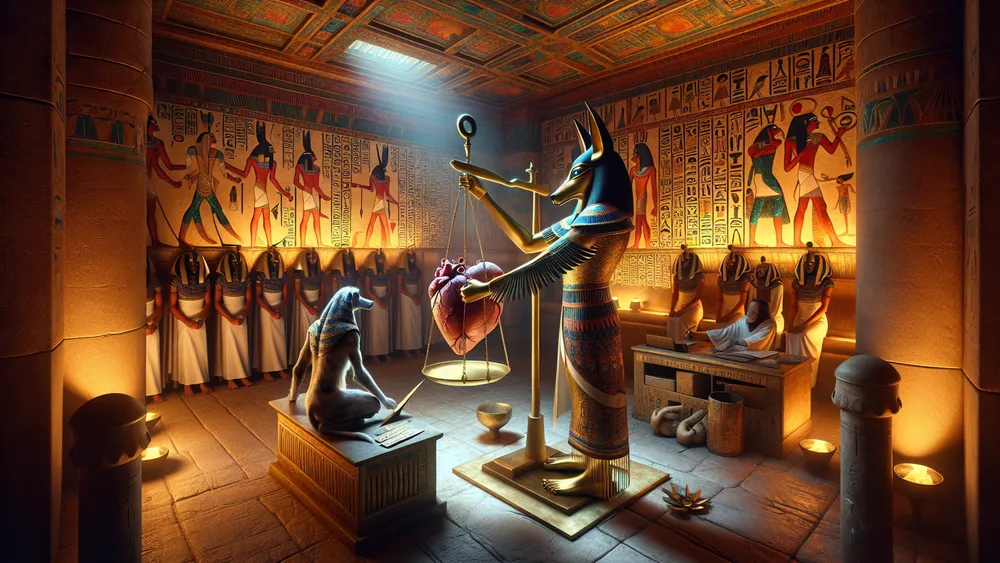
The Ib in Egyptian Writings
The Ib is often talked about in ancient Egyptian writings, especially in the Book of the Dead, a set of spells aimed at guiding the dead through the afterlife. These texts, they talk a lot about the Ib’s role in moral and ethical judgment, showing its importance in getting a good result in the Weighing of the Heart ceremony.
For example, in Spell 30B of the Book of the Dead, the heart is asked not to lie about the dead during judgment. This shows that ancient Egyptians believed the Ib was not only where emotion and thought happened but also, it was a key thing for deciding one’s fate in the afterlife.
Even today, modern writings can show what society values, and these old texts give a deep understanding of what the Ib meant culturally and spiritually, showing its main role in trying to get eternal life.
The Ib played a crucial role in ancient Egyptian beliefs, determining one’s fate in the afterlife based on moral and ethical judgment.
The Ib in Today’s Views and Research
Already, we’ve looked at the Ib’s importance in old writings and art, so now, it’s time to focus on how current research and today’s views have changed what we know about this important part of the soul.
Modern Research on the Ib
New school studies and findings from digging have given us new info on the idea of the Ib, showing its different role in ancient Egyptian culture. For example, new digs have found tomb inscriptions and things that give us more details on how the Ib was seen and respected. Also, experts have looked at old texts, like the Book of the Dead, and used new tech to find hidden details.
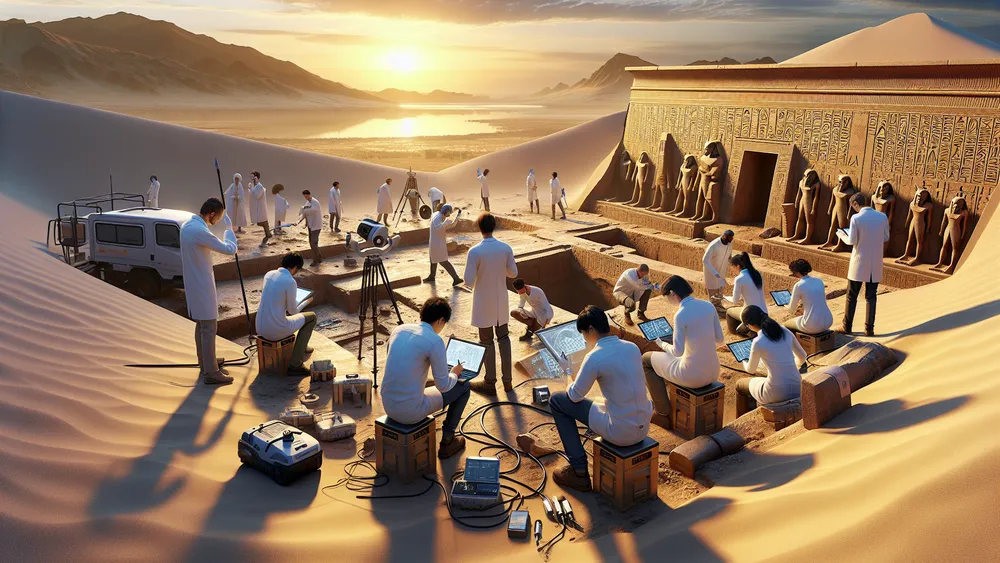
These new views have changed a lot from old understandings, just like how our knowledge of old cultures grows with new findings. Experts now see the Ib not just as a spirit thing but also as a mirror of a person’s moral and ethical life, giving us a better idea of its meaning. This change is like how science ideas change over time, adding new proof to make our knowledge better.
The Ib in Pop Culture
The idea of the Ib, it has shown up in modern stuff, showing in movies, books, and art that take from ancient Egyptian culture.
For example, movies like “The Mummy” and books such as “The Kane Chronicles” by Rick Riordan, they often talk about the Ib, showing it as a critical part of the soul that decides what a character does and what happens to them. These shows, they help make the idea popular, making it easier for more people to understand.
But, they also make people think in certain ways, sometimes making the Ib’s role simpler or more exciting to fit the story. Like historical figures in movies, the Ib’s picture in pop culture can teach and mislead, showing how important it is to think critically about these pictures.
This modern interest in the Ib, it shows how it still fascinates and the ongoing interest in ancient Egyptian stories.
FAQs
1. What is the significance of the Ib in ancient Egyptian religion?
The significance of the Ib in ancient Egyptian religion lies in its role as the seat of emotion, thought, and intention, crucial for moral judgment and the afterlife.
2. How was the Ib different from other components of the soul?
The Ib was different from other components of the soul because it was considered the seat of emotion, thought, and intention, whereas other elements like the Ka and Ba had distinct roles related to spiritual essence and mobility.
3. What was the Weighing of the Heart ceremony?
The Weighing of the Heart ceremony was an ancient Egyptian ritual where the deceased’s heart was weighed against the feather of Ma’at to determine their worthiness for the afterlife.
4. How is the Ib represented in modern interpretations?
The Ib is represented in modern interpretations as a crucial element of the ancient Egyptian understanding of the soul, often depicted in scholarly works and popular media as the heart’s essence and the seat of emotion and morality.

